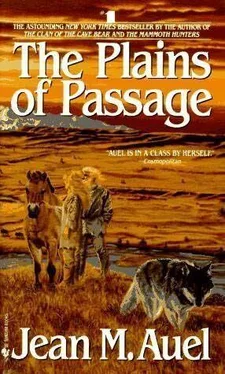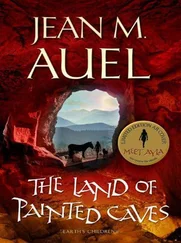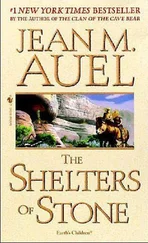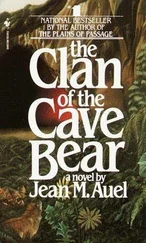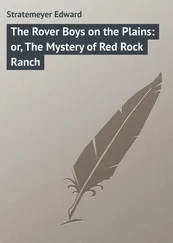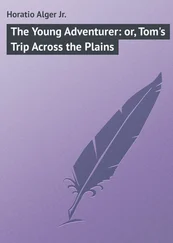"If they hadn't come back, that's what we'd be doing while we were looking for them," Ayla said, "but I am so glad they found us."
"I was worried about them, too," Jondalar said.
As they descended the steep southwestern face of the ancient massif that supported the harrowing ice field on its worn summit, a light rain fell, flushing out pockets of dirty snow that filled shaded hollows in the open spruce forest they passed through. But a watercolor wash of green tinged the brown earth of a sloping meadow and brushed the tips of shrubs nearby. Below, through openings in the misty fog, they caught glimpses of a river curling from west to north, forced by the surrounding highlands to follow a deep rift valley. Across the river to the south, the rugged alpine foreland faded into a purple haze, but rising wraith-like out of the haze was the high mountain range with ice halfway down its slopes.
"You're going to like Dalanar," Jondalar was saying as they rode comfortably side by side. "You'll like all the Lanzadonii. Most of them used to be Zelandonii, like me."
"What made him decide to start a new Cave?"
"I'm not sure. I was so young when he and my mother parted, I didn't really get to know him until I went to live with him, and he taught Joplaya and me how to work the stone. I don't think he decided to settle and start a new Cave until he met Jerika, but he chose this place because he found the flint mine. People were already talking about Lanzadonii stone when I was a boy," Jondalar explained.
"Jerika is his mate, and… Joplaya… is your cousin, right?"
"Yes. Close-cousin. Jerika's daughter, born to Dalanar's hearth. She's a good flint knapper, too, but don't ever tell her I said so. She's a great tease, always joking. I wonder if she's found a mate. Great Mother! It's been so long. They are going to be so surprised to see us!"
"Jondalar!" Ayla said in a loud, urgent whisper. He pulled up short. "Look over there, near those trees. There's a deer!"
The man smiled. "Let's get it!" he said, reaching for a spear as he pulled out his spear-thrower and signaled Racer with his knees. Although his method of guiding his mount was not quite the same as hers, after nearly a year of traveling, he was as good a rider as Ayla.
She turned Whinney almost in tandem – she enjoyed being free and unencumbered by the travois for a change – and set her spear in her spear-thrower. Startled by the quick movement, the deer bounded off with high leaps, but they raced after it, coming up on either side and, with the help of the spear-throwers, dispatched the young, inexperienced buck easily. They butchered out their favorite parts and selected other choice cuts to bring as a gift to Dalanar's people, then let Wolf have his pick of what was left.
Toward evening, they found a racing, bubbling, healthy-looking stream and followed it until they came to a large open field with a few trees and some brush beside the water. They decided to make camp early and cook some of their deer meat. The rain had let up and there wasn't any hurry any more, though they had to keep reminding themselves of that.
The following morning, when Ayla stepped out of the tent, she stopped and gaped in amazement, stunned by the sight. The landscape seemed unreal, with the quality of an especially vivid dream. It seemed impossible that they could have endured the most harshly bitter intensity of extreme winter conditions only days ago and, suddenly, it was spring!
"Jondalar! Oh, Jondalar. Come and see!"
The man put his sleepy head out of the opening, and she watched his smile grow.
They were at a lower elevation, and the rainy drizzle and fog of the day before had given way to a bright new sun. The sky was a rich azure blue decorated with mounds of white. Trees and brush were flocked with the fresh bright green of new leaves and the grass in the field looked good enough to eat. Flowers – jonquils, lilies, columbines, irises, and more – bloomed in profusion. Birds of every color and many varieties darted and wheeled through the air, chirping and singing.
Ayla recognized most of them – thrushes, nightingales, bluethroats, nutcrackers, black-headed woodpeckers, and river warblers – and whistled their song back to them. Jondalar got up and came out of the tent in time to watch with admiration while she patiently coaxed a gray shrike to her hand.
"I don't know how you do that," he said, as the bird flew away.
Ayla smiled. "I'm going to look for something fresh and delicious to eat this morning," she said.
Wolf was gone again, and Ayla was sure he was exploring or hunting; spring brought adventures for him, too. She headed toward the horses, who were in the middle of the spring meadow grazing on the fine short blades of sweet grass. It was the rich season, the time of growth throughout the land.
For most of the year the broad plains surrounding the miles-thick sheets of ice, and the high mountain meadows, were dry and cold. Only scant rain or snow managed to fall on the land; the glaciers usually captured most of the moisture circulating in the air for themselves. Though permafrost was as pervasive on the ancient steppes as in the wetter northern tundras of later times, the glacier-driven winds kept the summers arid, and the land dry and firm, with few bogs. In winter, the winds kept the light snows blown into drifts, leaving large sections of the frozen ground bare of snow, but covered with grass that had dried into hay; feed that maintained the uncountable numbers of huge grazing animals.
But not all grasslands are the same. To create the rich abundance of the Ice Age plains, it wasn't so much the amount of precipitation – so long as it was sufficient – as when it fell; a combination of moisture and drying winds in the right proportions and at the right times made the difference.
Because of the angle of incoming sunlight, in lower latitudes the sun begins to warm the earth not long after the winter solstice. Where snow or ice have accumulated, most of the early spring sunlight is reflected back into space, and the little that is absorbed and converted to heat must be used to melt the snow cover before plants can grow.
But on the ancient grasslands, where winds had laid the plains bare, the sun poured its energy onto the dark soil, and received a warm welcome. The dry, frozen top layers of permafrost began to warm and thaw, and though it was still cold, the wealth of solar energy impelled seeds and extensive roots to prepare to send up shoots. But water in usable form was necessary if they were to flourish.
The glistening ice resisted the warming rays of spring, reflecting back the sunlight. But with so much moisture stored in the mountain-high icy sheets, it could not entirely reject the sun's advances or its caress of wanning winds. The tops of the glaciers began to melt, and some water trickled down through the fissures and slowly began to fill streams, and then rivers, which would bring the precious liquid to the parched land later in summer. But even more important were the fogs and the mists evaporating off the glacial masses of frozen water, because they filled the skies with rain clouds.
In spring, the warm sunlight caused the great mass of ice to give off moisture rather than to take it. For almost the only time during the entire year, rain fell, not on the glacier, but on the thirsty and fertile land that bounded it. An Ice Age summer could be hot, but it was brief; the primeval spring was long and wet, and plant growth was explosive and profuse.
Ice Age animals also did their growing in spring when everything was fresh and green, and rich in the nutrients they needed, at just the time they needed them. By nature, whether the season is lush or dry, spring is the time of the year when animals add size to young bones or to old tusks and horns, or grow new and bigger antlers, or shed thick winter coats and begin new ones. Because spring started early and lasted long, the growing season for animals was long as well, which encouraged their lavish size, and the impressive horny adornments.
Читать дальше
